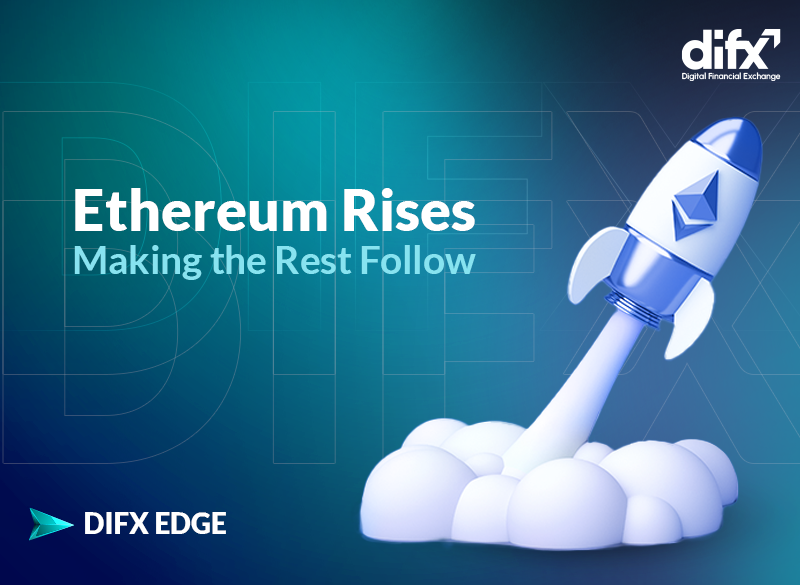From dummy whitepapers to once-promising projects turned dormant, one could say that it’s becoming more challenging to discover true BUIDLers within the crypto space; projects that are undoubtedly essential to ensure the long-term, sturdy growth of the ecosystem.
Once, an articulate whitepaper with a realistic and sound roadmap was enough to convince investors that the project would indeed have a bright future. However, a pile of projects with abandoned roadmaps along with the collapse of some of the biggest names in the industry has made things much more complicated.
Now, projects need to compensate for the damaged reputation of the ecosystem to be able to gain the trust of their users and investors alike. To achieve this, they need to live up to their promises as nothing more than delivered milestones can help them in this regard.
A Delayed Start That Didn’t Set the Road
Ethereum started its journey as a blockchain that would offer more than Bitcoin. Built on the same foundation as Bitcoin, Ethereum became the operating system of the crypto space where everyone could leverage the tools available to bring their ideas to reality.
Hundreds of applications were created on the Ethereum blockchain, coining or popularizing concepts like Decentralized Finance (DeFi), Non-fungible Tokens (NFTs), and Decentralized Applications (Dapps).
Soon, Ethereum realized that the adopted Proof-of-Work (PoW) model won’t be able to hold the capacity it was aiming for so a solution was proposed. Ethereum’s transition plan to become a Proof-of-Stake (PoS) blockchain was arranged and the roadmap was created. And this is where things started to become a little difficult.
Ethereum’s journey to a PoS system started quite bumpy. Ethereum 2.0 was delayed multiple times, making a huge part of the industry believe that Ethereum is just another crypto project that offers nothing but a shiny roadmap and empty promises.
But Ethereum and its crafty team of developers proved many wrong. The Beacon Chain eventually went live on December 1, 2020, setting up the foundation for Ethereum 2.0.
Phase 0 opened the doors to a PoS system, allowing users to become validators and earn rewards by simply staking their tokens. However, this reward required a serious commitment; validators couldn’t withdraw their staked Ethers for quite some time and had to wait for another upgrade which was expected to take at least 2 years to happen.
The Merge: The Key That Opened the Door to a New Era
Known as the most significant upgrade in Ethereum history, The Merge happened on September 15, 2022. The delay in The Merge was not surprising as it was a main upgrade that would officially merge the Beacon Chain into the main Ethereum network.
After The Merge, the energy consumption of the Ethereum blockchain dropped by almost 99.95%, making the second-largest blockchain in the world quite green and eco-friendly.
The successful execution of The Merge was indeed a significant event for the industry as it positively affected a wide range of projects and applications that lived on the Ethereum blockchain.
But The Merge was bigger than the Ethereum family. It showed the world that blockchain technology is flexible enough to modify itself to address the most pressing social issues while shedding light on the wide capabilities of this technology, proving that it can be expanded as much as required to be able to handle this great growing demand.
Shapella: An Upgrade with Surprising Spin-offs
Shapella, aka the Shanghai upgrade, was yet another important milestone for Ethereum as it would finally allow validators to withdraw their staked Ethers.
There were many speculations about Shapella as it would result in millions of Ethers entering the market. “Such a crash it might cause” was the thought that crossed the mind of many.
Shapella successfully happened on April 12, 2023, and more than 1 million Ethers were withdrawn from the deposit contract ever since. However, unlike what many thought, the market appreciated this bundle of new Ethers in a very positive way.
Interestingly, various wallets withdrew their tokens just to restake them back as the sentiment was anything but bearish.
The upgrade pushed the price of ETH above $2000 and for once, it was Ether, not Bitcoin, that lifted the rest of the crypto market with itself.
Ethereum Rises, Making the Rest Follow
Ethereum is undoubtedly one of the most substantial pillars of our industry. From the day-to-day users to investors and developers, Ethereum is having an effect on almost every aspect of the crypto and blockchain ecosystem in one way or another.
Its constant efforts to create a better platform for Dapp developers and a faster and more affordable experience for its users are inspiring many other projects within the space as well.
This will eventually lead to a highly-competitive ecosystem that offers novel solutions to the end user, improving the overall decentralization level. Projects with real-life use cases that are aiming to provide more private, affordable, and open alternatives to current options will convince retail and institutional investors that this space is much more than a bunch of pump-and-dump scams.
As more investors enter the industry, projects will have access to more funds while users would find it easier to trust the projects as reputable names are supporting them. What’s notable is that this growing adoption would not only affect the crypto space; other industries with conventional systems would try to either jump on the bandwagon or find a way to leverage blockchain technology to revolutionize their existing practices in a similar way.
Ethereum is indeed beyond a simple blockchain and we can confidently say that this platform and its notable upgrades are setting the ground for the ecosystem to consistently move toward the goals it was set to achieve on the day the Bitcoin whitepaper was drafted.

